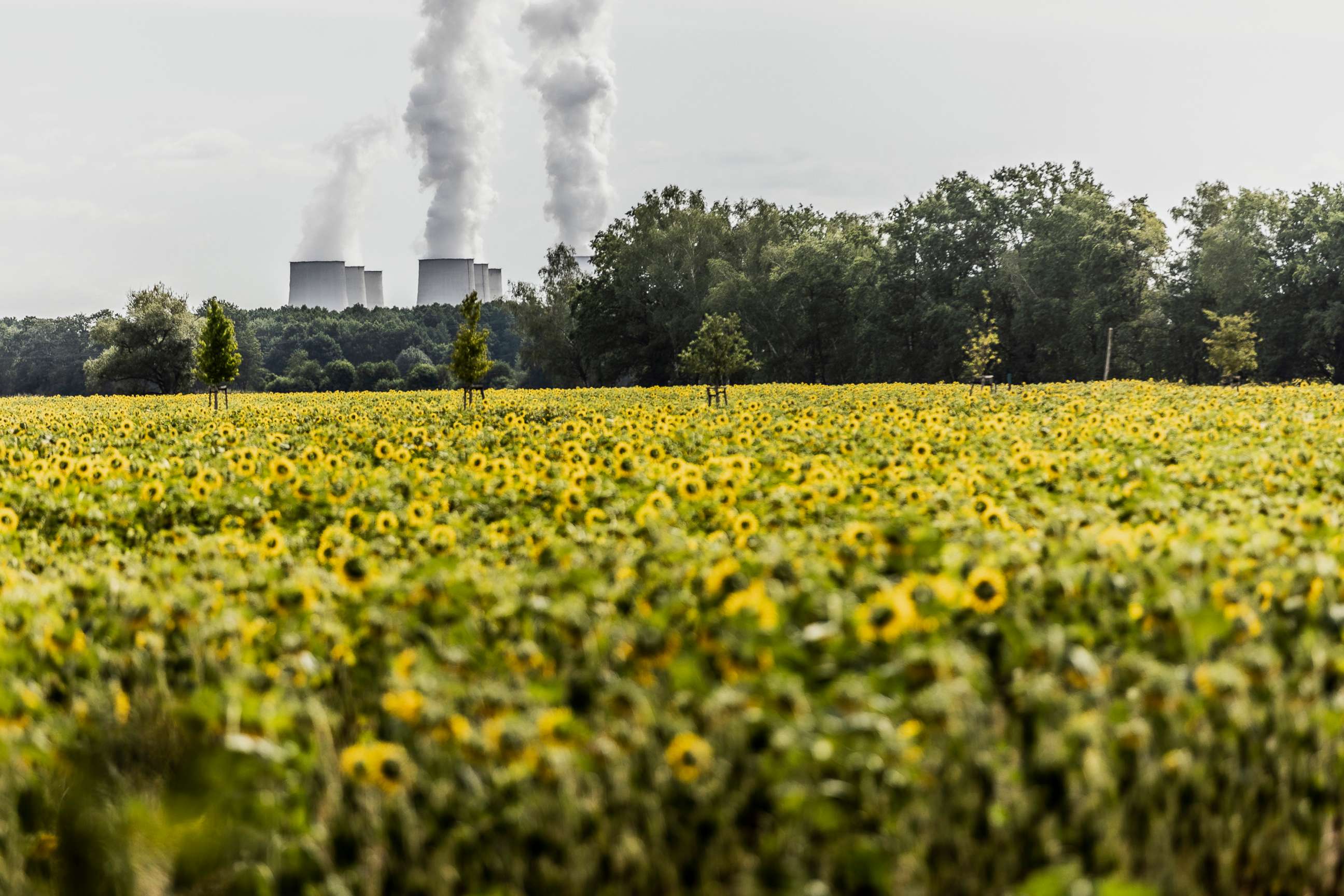2021 saw record-high greenhouse gases, sea levels and ocean heat, new report shows
Last year saw record levels of major greenhouse gases, including carbon dioxide and methane, released into the Earth's atmosphere, according to an international climate report.
The annual State of the Climate report, published Wednesday in the Bulletin of the American Meteorological Society and led by scientists from the National Oceanic and Atmospheric Administration's National Centers for Environmental Information, also found that global sea level and ocean heat reached record highs in 2021.
"The data presented in this report are clear -- we continue to see more compelling scientific evidence that climate change has global impacts and shows no sign of slowing," NOAA administrator Rick Spinrad said in a statement. "With many communities hit with 1,000-year floods, exceptional drought and historic heat this year, it shows that the climate crisis is not a future threat but something we must address today as we work to build a Climate-Ready Nation -- and world -- that is resilient to climate-driven extremes."
Greenhouse gas emissions from human activities are the "most significant driver of observed climate change since the mid-20th century," according to the U.S. Environmental Protection Agency, warming the climate as they build up in the atmosphere.
In 2021, the global annual average atmospheric carbon dioxide concentration was 414.7 parts per million (ppm) -- 2.3 ppm greater than the amounts measured in 2020, according to the latest State of the Climate report. That marks the highest amount measured since 1958 -- the start of the instrumental record -- and in at least the last million years, based on paleoclimatic records, the report found. It was also the fifth-highest growth rate in the modern record.

Two other major greenhouse gases -- methane and nitrous oxide -- also saw record concentrations last year, according to the report. The annual increase in methane was the highest in the modern record, and the growth rate of nitrous oxide the third-highest, it found.
Last year was the fifth- or sixth-warmest on record, depending on the dataset referenced, with the last seven years (2015-2021) the seven warmest years on record, according to the report.
Global ocean heat content, measured from the ocean's surface to a depth of more than 6,000 feet, saw record levels in 2021, "indicative of steadily increasing heat in Earth's system," according to the report. Meanwhile, the global sea surface temperature cooled compared to 2019 and 2020, due to the ongoing La Niña conditions in the tropical Pacific, though it was higher than the 1991-2020 average, the report found.
For the 10th year in a row, the global average sea level rose about 4.9 mm to a new record high, according to the report. The level was about 97 mm higher than the average recorded in 1993, when satellite measurements began, the report stated.

Both global ocean heat content and global average sea level saw "year-on-year increases substantially exceeding their trend rates of recent decades," the report stated.
Among other highlights, the report found that tropical cyclone activity was "well above average" in 2021, with 97 named tropical storms during the Northern and Southern Hemisphere storm seasons compared to the 1991-2020 average of 87. Last year's storm season saw Hurricane Ida, a category 4 cyclone that was the costliest U.S. disaster last year and the fifth most expensive hurricane on record since 1980, with $75 billion in damage, the report noted.
The climate report, now in its 32nd issuance, is based on contributions from more than 530 scientists in over 60 countries.
"The 2021 AMS State of the Climate provides the latest synthesis of scientific understanding of the climate system and the impact people are having on it," American Meteorological Society associate executive director Paul Higgins said in a statement. "If we take it seriously and use it wisely, it can help us thrive on a planet that is increasingly small in comparison to the impact of our activities."




